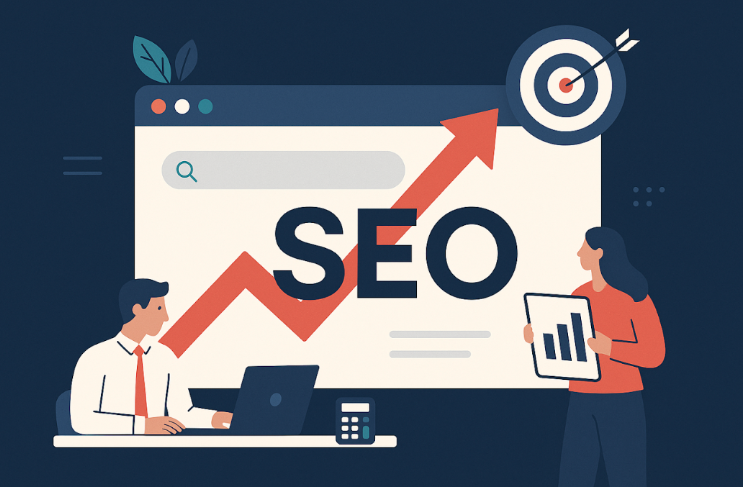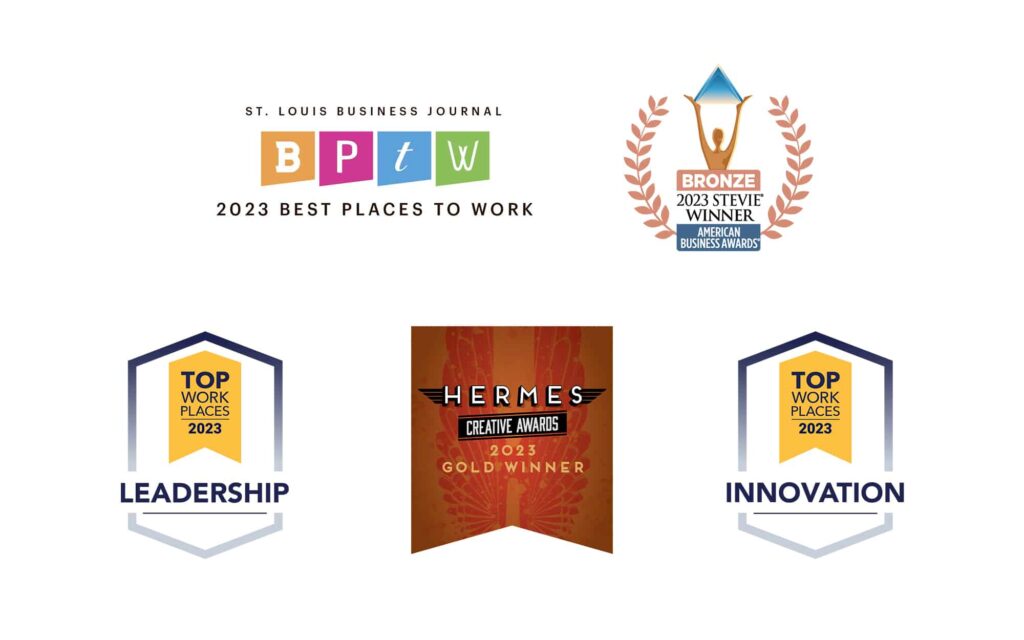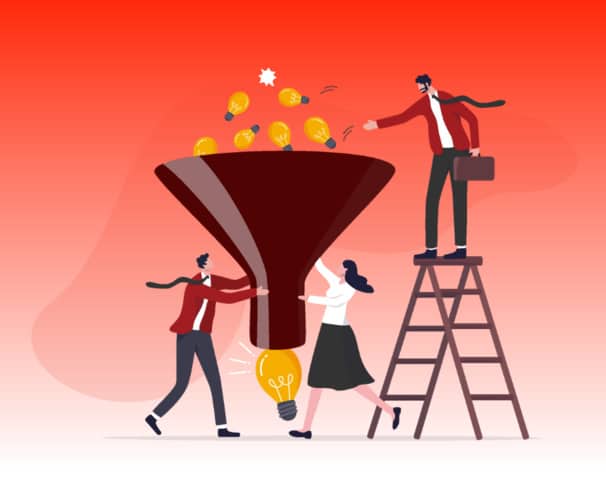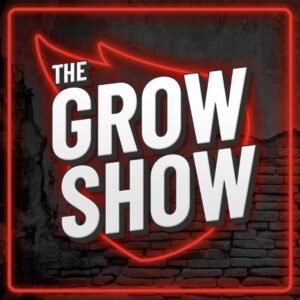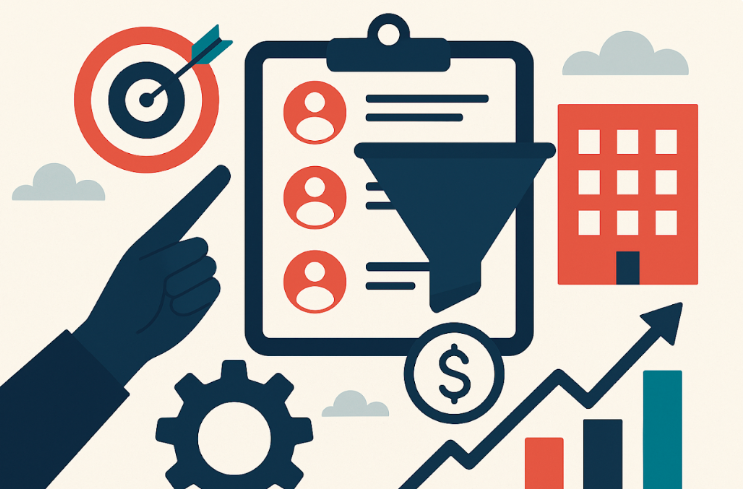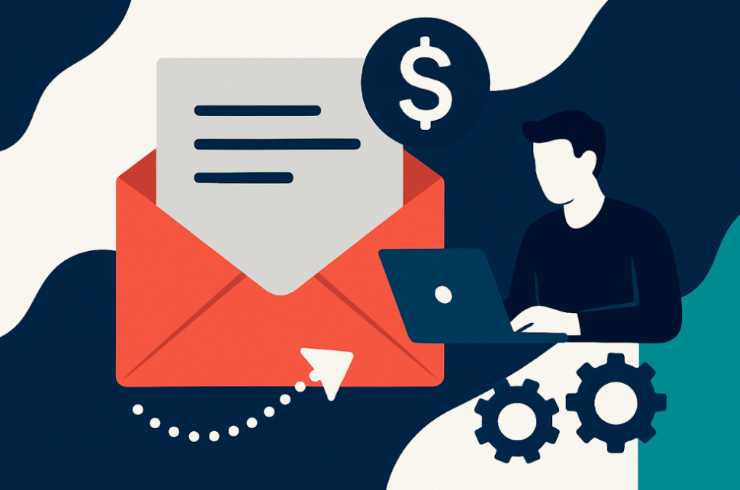In a marketplace where attention is currency and trust is earned slowly, technology is no longer just a support system for marketing. It is the growth engine. Companies that leverage the right tools not only increase lead volume but also improve lead quality, reduce acquisition costs, and accelerate the sales cycle.
Below are the most impactful lead generation technology trends reshaping how successful businesses grow their pipelines and close deals.
Contents
- 1 Artificial Intelligence and Machine Learning
- 2 Chatbots and Conversational Marketing
- 3 Data Privacy and Compliance
- 4 Video Marketing and Live Streaming
- 5 Social Media and Influencer Marketing
- 6 Augmented Reality (AR) and Virtual Reality (VR)
- 7 Voice Search Optimization
- 8 Blockchain Technology
- 9 Conclusion: Growth Is Tech-Enabled
Artificial Intelligence and Machine Learning
AI and machine learning transform lead generation from an educated guessing game into a precision science. By interpreting complex data sets faster and more accurately than humans, these tools give companies a distinct edge.
Enhanced Data Analysis
Studies find that 83% of high-performing marketing organizations use AI to gain deeper insights into customer behavior.
AI platforms sift through customer behavior, intent signals, and engagement metrics to identify patterns and opportunities that human teams would overlook. For example, AI can detect when a lead is in a high-conversion window based on content interaction, timing, and behavior patterns. This enables companies to launch timely, relevant outreach campaigns that feel highly personalized.
Predictive Lead Scoring
Traditional lead scoring models often rely on static criteria (like job title, company size, or email opens) that only scratch the surface of lead intent. Predictive lead scoring, powered by artificial intelligence, takes it several steps further by analyzing both historical data and real-time behavior to accurately forecast a lead’s likelihood to convert.
This includes:
- Time spent on high-value pages (pricing, demo)
- Engagement across touchpoints (email clicks, webinar attendance, form fills)
- CRM interaction history
- Firmographic data matched with conversion trends
Personalized Outreach at Scale
Personalization used to mean swapping out a first name in an email. Today, it’s about delivering relevant value at the right moment, based on a deep understanding of each prospect’s behavior, needs, and business context.
AI-driven personalization uses real-time data and previous engagement to customize:
- Email sequences tailored to the lead’s industry and role
- Dynamic landing page content based on company size or industry vertical
- Chatbot conversations adjusted to product interest or lifecycle stage
- Retargeting ads that reflect recently viewed content or downloaded resources
Related Articles: Balancing Personalization and Marketing Automation
Continual Learning and Strategy Refinement
Machine learning models improve over time. As they process more data, they refine their accuracy in targeting, messaging, and lead prioritization. This leads to higher ROI and sustained long-term growth, not just temporary gains.
Chatbots and Conversational Marketing
Gartner predicts that by 2027, chatbots will become the primary customer service channel for roughly a quarter of organizations.
They are now a critical component of digital lead capture strategies. They offer instant, intelligent interactions that bridge the gap between curiosity and conversion.
Always-On Availability
Chatbots allow brands to engage visitors around the clock. Whether answering questions, booking meetings, or qualifying leads, they eliminate the latency of manual response. This is particularly valuable in high-intent moments when human reps are offline.
Intelligent Dialogue with Context
Advanced bots powered by natural language processing (NLP) can understand sentiment, ask qualifying questions, and even route inquiries based on urgency or industry. Unlike legacy live chat, these conversations feel natural, helpful, and targeted.
Efficient Qualification and Handoff
Integrated chatbots can sync with CRM tools, assign lead scores, and notify human reps in real time. This creates a seamless handoff from automation to sales, reducing lag time and increasing conversion probability.
Data Privacy and Compliance
Consumer skepticism is high, and privacy regulations are evolving rapidly. Trust is a critical asset, and your data practices must support it.
Transparent, Consent-Based Data Collection
Modern lead generation tools include built-in compliance features that ensure you gather and store data ethically. Forms that clearly explain data usage, explicit opt-in language, and accessible privacy policies all contribute to building trust with your audience.
Maximizing First-Party Data Value
Companies that actively leverage first-party data in their marketing efforts see up to a 2X increase in revenue from a single campaign.
As third-party cookies become obsolete, first-party data is becoming the foundation of successful lead generation. Businesses that collect data directly through gated content, chat, surveys, and direct interactions gain access to more reliable and actionable insights.
We know how valuable your prospect data is. That’s why we pair enterprise-grade tools with expert SDRs to keep it secure, actionable, and working for you.
From smart scoring to seamless outreach, we don’t just fill pipelines; we future-proof them.
Integrated Marketing Automation
Disconnected tools create inefficiencies and missed opportunities. Marketing automation platforms consolidate outreach, nurturing, and analytics into a single, synchronized system.
Unified Campaign Execution
An integrated automation platform allows your team to manage email campaigns, SMS, landing pages, paid ads, and social content from a central interface. This alignment ensures that prospects receive a consistent experience across every interaction.
For example, let’s say a cybersecurity company uses Salesforce to manage top-of-funnel engagement, mid-funnel nurturing, and bottom-funnel sales enablement content—all within the same platform. When a lead clicks a LinkedIn ad and downloads a free security checklist, the system automatically sends a follow-up email sequence, enrolls them in a webinar workflow, and flags them for SDR outreach after engagement.
Behavior-Based Nurturing
57% of marketers say behavior-based automation is the most effective tactic for improving lead nurturing performance. These personalized, timely follow-ups lead to higher engagement rates and shorter sales cycles.
Rather than relying on time-triggered emails, advanced automation uses behavioral triggers. For example, if a lead downloads a whitepaper, they are automatically enrolled in a follow-up sequence specific to that topic. This keeps your content relevant and timely without requiring manual intervention.
Video Marketing and Live Streaming
HubSpot reports that 54% of consumers prefer video as their content format, and 88% say they’ve been convinced to buy a product or service by watching a brand video.
Video is one of the most effective ways to communicate value quickly and with emotional resonance. Whether you aim to explain a complex service, demonstrate product features, or build trust with testimonials, video delivers clarity and connection at scale.
Attention-Grabbing Formats
Videos enable storytelling that engages the audience more deeply than static content. Explainer videos, testimonials, and walkthroughs help buyers visualize benefits and understand differentiators in less time.
Real-Time Engagement
Live video platforms like LinkedIn Live or YouTube Live enable real-time connection. Hosting product demos, live Q&As, or expert panels offers high-value interaction and generates leads through gated registrations or embedded CTAs.
For example, HubSpot frequently hosts live product walkthroughs and “Ask Me Anything” sessions with their product team and executives via LinkedIn Live. These events give prospects direct access to answers, real-time demos, and insight into new features, building trust while capturing leads in the moment.
Social Media and Influencer Marketing
Social platforms have matured into high-performance lead generation channels when used with precision and strategy.
Hyper-Targeted Campaigns
Platforms like LinkedIn, Meta, and X (formerly Twitter) offer advanced audience segmentation by role, industry, company size, behaviors, and interests. You can now deliver custom messaging to C-level buyers at target accounts within minutes.
Influencer-Led Brand Expansion
In B2B, partnering with micro-influencers or industry thought leaders can significantly boost trust and reach. Influencers offer pre-established credibility and open the door to new, highly engaged audiences.
A strong example of this is Salesforce’s collaboration with Brent Adamson, co-author of The Challenger Sale and a highly respected voice in B2B sales strategy. Salesforce frequently features Adamson in webinars, content panels, and event keynotes to drive engagement among high-level sales professionals. His reputation lends weight to Salesforce’s messaging and helps build trust with their target audience of enterprise revenue leaders.
Augmented Reality (AR) and Virtual Reality (VR)
Immersive technology isn’t just a novelty for gaming or retail—it’s becoming a high-impact tool in B2B marketing and sales environments where complex offerings require a more dynamic buying experience. AR and VR enable B2B brands to educate, demonstrate, and differentiate at scale.
Immersive “Try-Before-You-Buy” Experiences
In B2B, high-ticket products and technical services often require more than a spec sheet or a static demo. AR and VR can bridge that gap by allowing prospects to visualize how a product works within their specific environment or workflow.
For example, Honeywell uses VR to simulate industrial safety training and equipment usage for enterprise buyers, giving them hands-on experience without needing a physical presence.
Similarly, Cisco has leveraged AR in trade shows to let IT buyers explore complex hardware stacks virtually, dramatically reducing the logistical burden of on-site demos while still delivering a tactile, interactive experience.
These technologies shorten the education curve and help stakeholders visualize ROI before committing to a sales call.
Engagement That Drives Deeper Understanding and Faster Decisions
Because AR and VR require user interaction, leading to higher engagement and memory retention. According to PwC, users in VR environments were four times more focused than their e-learning peers and completed training four times faster.
B2B buyers are often part of a longer sales cycle involving multiple decision-makers. Immersive experiences can help rally internal support by allowing everyone involved to “see” the value first-hand, be it through a virtual plant tour, software walkthrough, or real-time data simulation.
Voice Search Optimization
Smart speakers and voice-enabled search rapidly reshape how users access information, especially on mobile and in local contexts. While voice search has been largely associated with B2C, B2B marketers can no longer ignore its growing impact. With more professionals relying on mobile devices and voice assistants for quick research and vendor discovery, optimizing for voice can create a distinct competitive edge.
Conversational Keyword Strategy
Voice searches tend to be more conversational, question-driven, and intent-rich. For example, a desktop user might type “CRM software comparison,” whereas a voice user might say, “What is the best CRM software for B2B companies with under 100 employees?”
To capture these queries, your SEO strategy must evolve from short-tail keywords to long-tail, natural language phrases. B2B companies should focus on content that answers specific questions, such as “How does [your service] work for [industry]?” or “What’s the best way to improve lead response time for tech sales teams?”
Enhanced Local Visibility
Voice search is also hyper-local. Many B2B buyers search for vendors, agencies, or service providers “near me” when looking for meetings, training, or physical collaboration. Optimizing your Google Business Profile, ensuring consistent NAP (name, address, phone number) information, and encouraging client reviews all improve your ranking in local voice searches.
Blockchain Technology
While often associated with cryptocurrency and finance, blockchain is rapidly emerging as a game-changer in B2B lead generation, particularly regarding data security, verification, and automation. As privacy regulations tighten and buyer trust becomes harder to earn, blockchain provides the transparency and reliability modern buyers expect.
Tamper-Proof Data Security
Blockchain stores data in decentralized, cryptographically secured ledgers that cannot be altered retroactively. For B2B companies managing large volumes of sensitive lead information (especially in regulated sectors like healthcare, legal, or finance), this offers a much-needed layer of protection and auditability.
Automation with Smart Contracts
Smart contracts are self-executing programs stored on a blockchain that automatically trigger actions when predefined conditions are met. In a B2B sales environment, this can mean instant execution of NDAs, service-level agreements, demo scheduling, or even lead qualification workflows.
For example, when a lead meets qualification criteria (like company size, role, or budget), a smart contract could trigger an automatic onboarding sequence or schedule a discovery call, without human intervention. This accelerates pipeline velocity and eliminates bottlenecks in the buyer journey.
Conclusion: Growth Is Tech-Enabled
Modern lead generation is not just about having more tools—it is about using the right ones strategically. Businesses that adopt technology-driven strategies experience faster growth, higher conversion rates, and a more resilient pipeline.
Accelerate Your Lead Generation with Abstrakt
At Abstrakt, we combine best-in-class technology with proven B2B lead generation methodologies. Our solutions are designed to identify, nurture, and convert your ideal prospects—so your sales team can focus on closing deals.
Looking to implement the technology that actually moves the needle?

Madison Hendrix
Madison has worked in SEO and content writing at Abstrakt for over 5 years and has become a certified lead generation expert through her hours upon hours of research to identify the best possible strategies for companies to grow within our niche industry target audiences. An early adopter of AIO (A.I. Optimization) with many organic search accolades - she brings a unique level of expertise to Abstrakt providing helpful info to all of our core audiences.
- Madison Hendrix#molongui-disabled-link
- Madison Hendrix#molongui-disabled-link
- Madison Hendrix#molongui-disabled-link
- Madison Hendrix#molongui-disabled-link
